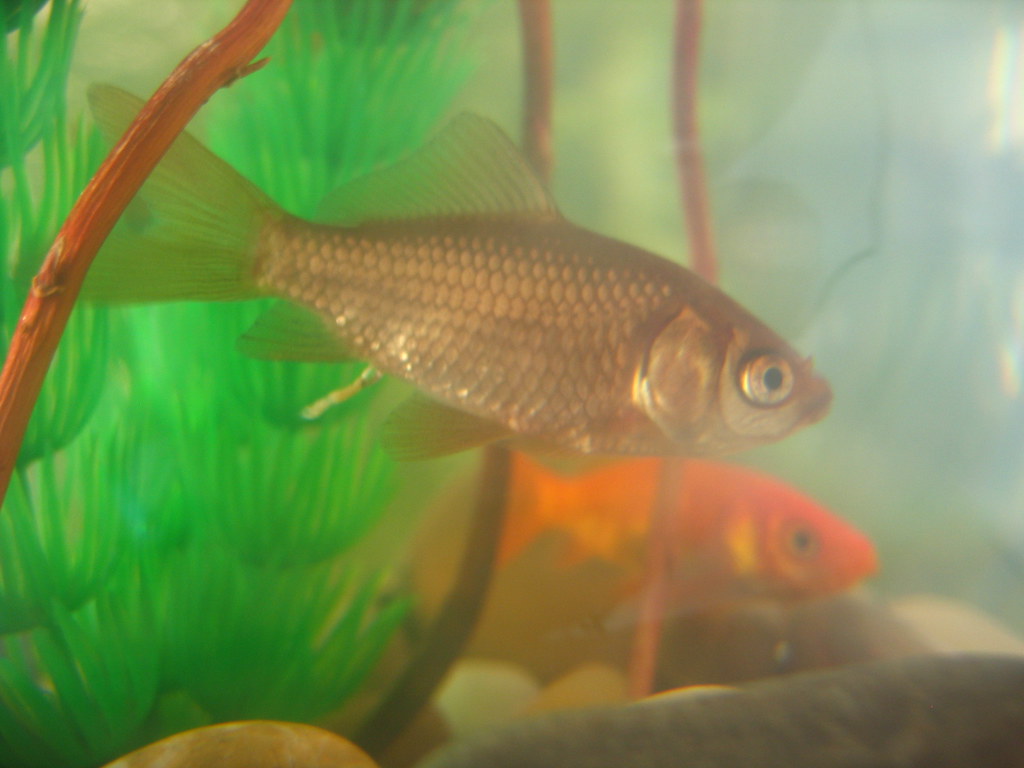
Why Your Goldfish Might Be Turning Black—and What to Do About It
Ever glanced into your goldfish tank and noticed your fish starting to sport an unexpected black hue? Don't panic—this is a common issue, and understanding the root causes can help you remedy it effectively. Let's dive into why your aquatic buddy is changing color and what actions you can take to ensure its health and happiness.
Understanding the Color Change
Goldfish are known for their vibrant hues, but noticing black spots or patches on your goldfish can be puzzling. There are primarily four reasons these changes occur:
- Ammonia Burns: When goldfish reside in tanks with high ammonia levels, they can suffer from burns that lead to black spots. This happens because their skin is healing, much like human skin scars after an injury. Understanding how ammonia burns form and how to treat them can help you swiftly address this issue. Regular water testing is essential for prevention.
- Injury Recovery: If your goldfish recently bumped into something or sustained an injury, the black marks might be part of the healing process, akin to a scab. As noted in this overview of goldfish traits and characteristics, scale discoloration can occur after trauma or damage, especially during recuperation.
- Natural Coloration Changes: Sometimes, the color change is completely natural, especially with varieties like Black Moors or Shubunkins. These changes typically are gradual and coincide with growth or aging.
- Black Spot Disease: Although rare, this is a parasitic infection usually seen in tanks with snails or ponds. It's best to consider this only if you've eliminated the other reasons.
Ensuring Optimal Tank Conditions

Maintaining a goldfish-friendly environment is crucial to their health. Let’s explore some key points:
- Regular Water Changes: Regularly replacing about 50% of the water can help keep ammonia levels low. Make sure you use treated and settled water to avoid shocking your fish with sudden changes in temperature or composition.
- Avoid Overcrowding: Many goldfish owners make the mistake of keeping too many fish in a small tank. A good rule of thumb is 10-20 gallons of water per goldfish. This not only prevents ammonia spikes but also reduces stress for your fish.
- Proper Filtration: Investing in a good filtration system can go a long way in maintaining a balanced ecosystem in your tank. It helps in breaking down waste that can contribute to ammonia buildup.
Here's a comparison to help guide tank setup:
| Factor | Ideal Setup | Common Mistake |
|---|---|---|
| Tank Size | 10-20 gallons per fish | Less than 10 gallons per fish |
| Water Changes | Twice weekly 50% changes | Infrequent or inadequate changes |
| Lighting | Mix of LED and natural light | Excessive or poor lighting |
Keeping an Eye on Behavior
Monitor your fish closely. A healthy goldfish is usually active with a good appetite. If your fish fits this description despite the color change, that's a positive sign. However, if symptoms like lethargy or lack of appetite appear, further investigation may be needed. In some cases, scale loss or irregularities may also coincide with discoloration. Learn more about this issue in this guide on common causes of scale loss in goldfish.
Next Steps and Community Support

Once you’ve identified the potential cause and taken steps to remedy it, consider the long-term living arrangements for your goldfish. Some goldfish enthusiasts eventually rehome larger species to ponds where they can thrive more naturally. Joining forums or community groups can provide additional support and share experiences.
Curious about more ways to keep your goldfish healthy? Or wondering about any particular behavior or changes you’ve noticed in your pet fish? Drop a comment below or share this article with fellow fish enthusiasts to start a conversation!
Frequently Asked Questions
Why is my goldfish turning black?
Goldfish turning black is often caused by chemical burns, physical injuries, or poor water quality. In some cases, it could be due to an infection like black spot disease caused by parasitic flukes. Regularly test water parameters and maintain clean water conditions to prevent such issues.
What can I do to help my goldfish if it's turning black?
If your goldfish is turning black, check the water quality and ensure the water is well-filtered and ammonia levels are safe. This discoloration may be caused by healing injuries or poor conditions. Improving water quality usually helps reverse the blackening.
Is it harmful if my goldfish turns black?
Blackening in goldfish is not always dangerous but can indicate underlying problems such as ammonia burns, injuries, or infections. Regular monitoring of health and water quality is essential to prevent harmful effects and ensure your goldfish remains healthy.
Can black spot disease affect goldfish?
Yes, goldfish can be affected by black spot disease, which is caused by parasitic flukes. These parasites burrow into the skin and lay eggs, causing visible black spots. While uncommon, treating the tank and removing parasites can help protect your fish.
We hope this post has shed some light on why your goldfish might be turning black and offered helpful tips on keeping your finned friend healthy. If you enjoyed this article and would love to dive deeper into the world of pet care, follow us on Pinterest for a splash of inspiration or drop by our Instagram to catch a glimpse of our aquatic adventures. We also love chatting with fellow fish enthusiasts on X (formerly Twitter) and Facebook. Feel free to connect and share your own goldfish stories with us. Thank you for being part of our friendly community, and we’re excited to swim along this journey with you!
